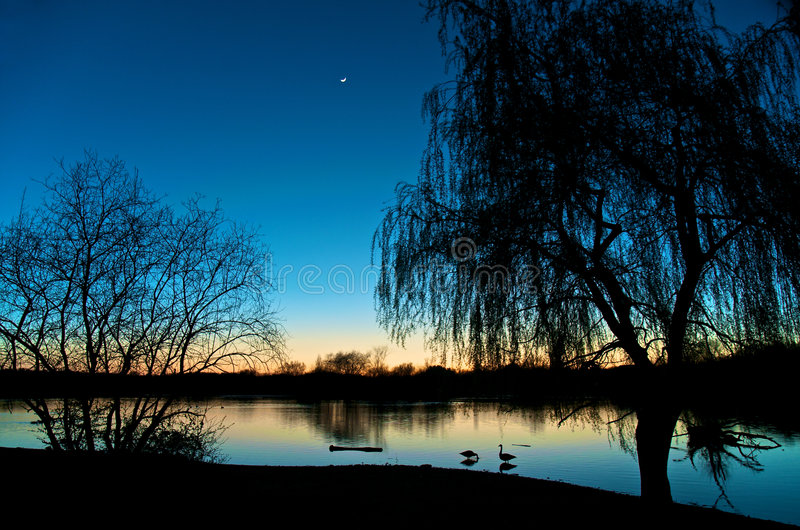
at end of day —
indigo lake cools off
and soaks up twilight
|
 |
Haiku
Contest Winner
|
|
|
Author Notes
HAIKU is an unrhymed Japanese poem that uses imagistic language to convey the essence of a human experience in nature. It uses a juxtaposition of two concrete images in a way that prompts the reader to make an insightful connection between the two. It alludes to a season of the year with direct words (summer, winter, autumn, spring) or not direct words (northern wind, warm breeze, harvest, Christmas, New Year, cherry blossoms, etc) The best haiku avoid the poet's ego and views. FORM Japanese haiku is written in 17 syllables and three lines ( 5/7/5) in English is 17 syllables OR LESS in any combination (3/5/3 - 2/7/6 - 5/6/5 - etc). AVOID punctuation, alliteration, metaphor, personification, and capital letters (proper names are okay). Haiku and other Japanese poetry don't need titles but in fanstory we have to have one. It can be anything that relates to the haiku. To pause before the satori you can use a dash, sometimes a comma is okay, but we keep punctuation to a minimum ..
HAIKU SOURCES -- CLICK HERE TO READ Haiku Ten Tips -- CLICK HERE TO READ Haiku Society of America Haiku Examples -- CLICK HERE TO READHaiku Society of America Haiku Rules -- CLICK HERE TO READ Matsuo Basho Haiku Collection -- Ci9LICK HERE TO READ Matsuo Basho History -- CLICK HERE TO READ why haiku can be less than 17 syllables -- CLICK HERE TO READ SEASON WORDS (Kigo) List
Thank you very much for taking the time to read and review my poem.
Gypsy
|
|




